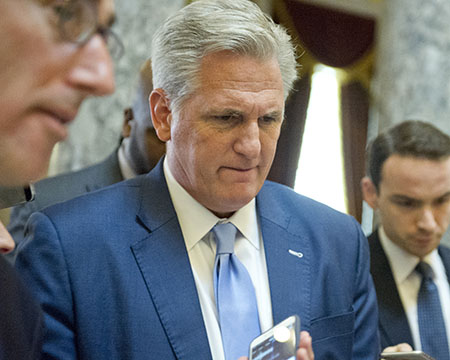In defense of healthcare
August 17, 2018

In this age of fast-paced, 24-hour news cycles, it is easy to be distracted by flashy news stories, like Trump’s alleged extramarital affairs, Russian involvement in the 2016 election or potential North Korean denuclearization. However, one other important story that went somewhat unnoticed back in May was that Republican President Donald Trump asked the GOP-controlled Congress to cut $7 billion from the Children’s Health Insurance Program (CHIP), which covers 9 million children from low-income families. More recently, however, the Trump Administration asked state and federal courts to get rid of the core aspects of the Affordable Care Act.
This behavior can also be seen in the Republican Tax scam: while Republican politicians claim that their tax plan benefits the working class, it only benefits wealthy corporations. The Tax Policy Center asserts that the income tax cuts for the middle and lower class are temporary, whereas the corporate tax cuts are permanent. Taking money away from CHIP is part of a larger Republican assault on the needs of the poor, including healthcare. The Republican approach to healthcare is to take it away from those who need it most, and this needs to change.
The job of the government is to protect its citizens and help those in need. The Declaration of Independence listed three unalienable rights common to all Americans: Life, Liberty, and the pursuit of Happiness. The founders listed life first. In addition, the very first paragraph of the United States Constitution says it intends to–among other things–“promote the general Welfare” of the American people. The Republican assault on healthcare proves that they are disregarding their responsibility to look out for the general welfare of their constituents.
On May 4, 2017, the Republican House of Representatives voted to pass the American Health Care Act (AHCA), otherwise known as a repeal of the Affordable Care Act. According to the nonpartisan Congressional Budget Office (CBO), the GOP’s plan, if made into a law, would cut Medicaid for low-income Americans by about $880 billion between 2017-2026. It also would have cut taxes for the wealthy, with those earning $1 million or more annually garnering around $40 billion in tax cuts, according to the Center on Budget and Policy Priorities. Lastly, premiums would have increased sizeably for the elderly by 2026 (CBO), and the plan would have rendered 23 million Americans uninsured within the next ten years.
When the bill reached the Senate, it was renamed the Better Care Reconciliation Act of 2017 (BCRA). According to the CBO, this plan would have caused approximately 49 million people to lose health care coverage by 2026. Fortunately for the country, it was not passed (by a close margin) due to Republican Senators Lisa Murkowski, Susan Collins, and John McCain voting against the act. Donald Trump responded by instituting Executive Order #13,813 to end subsidies to health insurance companies, which low-income Americans rely on for healthcare. According to the CBO, Trump’s executive order will increase premiums by around 20%, and add approximately $200 billion to the budget deficit over the next ten years. This order effectively repealed the Affordable Care Act, with Trump himself saying, “there’s no such thing as Obamacare anymore.”
So, it should have been no surprise that on May 8, Donald Trump asked Congress to cut $7 billion from CHIP, the Children’s Health Insurance Program, which covers 9 million children from low-income families. Trump also wants $800 million of funding cut from the Center for Medicare and Medicaid Innovation, a program within the Affordable Care Act that saves money on the healthcare programs of low-income Americans. Its goal is to prevent an increase in the cost of healthcare, while maintaining good quality of care. Conservatives are disguising cuts to these important programs with so-called “fiscal conservatism.”
Statements from the White House and from Republican members of Congress claim that these cuts are necessary to reduce spending. They also claim that these cuts will not impact CHIP’s performance, because the money that the GOP wants to cut from CHIP is a reserve intended to be used if CHIP had more children enrolled than they could sustain with their current budget. This part of CHIP’s funding is called the special contingency fund, from which Donald Trump wants to cut $2 billion.
Trump’s supporters in Congress might argue that the contingency fund is not necessary anyways, and that defunding that part of CHIP will not impact its overall impact on the children enrolled. However, a contingency fund, while seemingly unnecessary now, will be necessary in the event that an economic recession occurs. That is why gutting this $7 billion from CHIP is so harmful to the children enrolled in the program: when a recession occurs, the children cared for under CHIP will be even worse off than they are now.
The fact is, this is another one of the Republican Party’s attempts to take away healthcare coverage from people who need it most. On the campaign trail, Donald Trump told the voters that he would not make any cuts to Medicare or Medicaid. However, this turned out to be another one of his lies. Since then, the Republican healthcare plans he has endorsed, and the executive order he instituted, have gutted the very programs he claimed he would protect. The Affordable Care Act gives people freedom over their healthcare, allowing them to have a greater chance of living healthy lives. When Republicans take away the healthcare of disadvantaged children, the poor, and the middle class, they are taking away the freedom those people have over their own care and lives. In sabotaging the ACA through defunding some of its most important provisions and now, in aiming to defund significant provisions within CHIP, Donald Trump and the Republican Party have failed to defend the “unalienable rights” and the lives of the American people.




